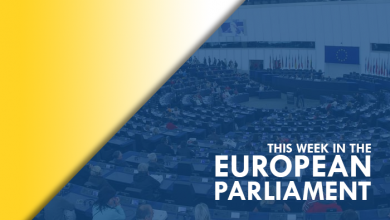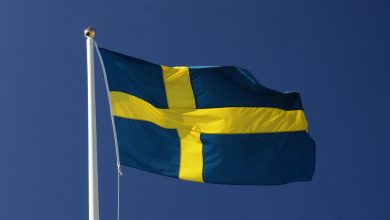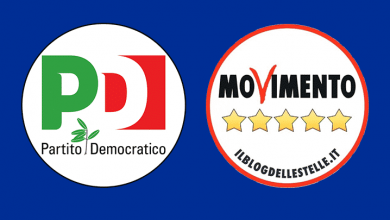The Next Enlargement Wave: Northern Macedonia Hopeful For Progress

‘The Next Enlargement Wave’ is an article series providing information about the candidate countries for EU membership and their path ahead. In this fourth installment, we will look at Northern Macedonia.
Since the birth of the Coal and Steel Community in 1952, the European project has grown from a meagre 6 founders to its current 28 members through six distinct enlargement waves. Now, the European Union seems to be ready for a seventh wave – this time incorporating the Western Balkans within the bloc. But how does a country go about joining the EU, exactly? It is necessary to meet determinate criteria before even being considered as a potential candidate member. For example, countries must be ‘European‘, something which has proven of difficult interpretation in the past. When Morocco applied, the EU turned it down on the basis that it was not a European country, but only a few years later Cyprus’ application was accepted – even though the island is technically in Asia. Nowadays, it is down to a purely political decision on a holistic basis.
European countries which wish to apply for membership also have to show that they fulfill the so-called Copenhagen criteria. This requires potential candidate countries to demonstrate respect of democracy and fundamental freedoms, the existence of a functioning market economy, and the intent to accept the obligations formed by EU membership. It is only once the Copenhagen criteria are fulfilled that the accession negotiations can finally begin. These negotiations involve the complicated process of adapting the candidate country’s legislation to the EU’s acquis communautaire, the corpus of legislation of the Union.
There are currently five countries which have the official status of candidate countries: Albania, Montenegro, Northern Macedonia (FYROM), Serbia, and Turkey. The European Commission moreover recognises two additional potential candidate countries, which are not ready to start negotiating yet but will probably be in the near future: Kosovo and Bosnia and Herzegovina. Each of these countries has a unique relationship with the EU, and their negotiating processes has been very different due to the different internal mechanisms. This series will attempt to track the specificities of each of them and what those means for the future of their enlargement negotiations. After looking at Albania, Montenegro, and Serbia this installment will focus on Northern Macedonia.
Geography and Culture of Northern Macedonia
Northern Macedonia is located in the southern part of the Western Balkans, between Albania, Kosovo, Serbia, Bulgaria and Greece. It spans across 25.713 sq. km. and has a population of just over two million citizens. Due to its long and troubled history, Macedonian culture is a mix of Greek, Slavic, Ottoman and Albanian influences.
The culture has been greatly influenced by the Greek one. It is possible to notice this from its flag, showcasing the ancient Greek-Macedonian symbol of the Vergina Sun, and from the incredible number of Greek philosophers’ and warriors’ statues in Skopje. Also, Ottoman culture influenced Northern Macedonia, above all about the cuisine and the Muslim heritage of the country.

Macedonian cuisine is famous for its rich Šopska salad, a typical appetiser, and alcoholic drinks which more than other dishes can represent the cultural variety in Northern Macedonia. The typical alcoholic beverages are rakija – which is very traditional in all the Western Balkans – and mastika, a liqueur that comes from Chios island and it is considered very traditional in Greece.
Macedonian is the only official language in the country and it is written using the Cyrillic alphabet. Minority languages include Albanian, Turkish, Serbian, Romani, Bosnian and Aromanian. The last one is spoken above all by Vlachs, a term used to identify the Romance communities in the Balkans. The highest number of Aromanian speakers lives in Greece, but Northern Macedonia and Albania are the only countries where they are officially recognised as a minority.
Society and Religion
The largest ethnic group in the country are Macedonians, but there are also many minorities represented. Albanians are 25.17% of the population. In Tetovo, in the north-western part of the country, Albanian are about 55% of the population and in the villages, the number increases. Such percentages effectively mean that they have a very crucial role in the political life of the country. The historical centre of Skopje holds the ancient bazaar and the most important mosques and it is considered the most important Albanian-culture area of the capital. In addition to that, Turks are the third biggest ethnic group of the country, followed by Romani and Serbs.
Eastern Orthodox Christianity is the most common faith in Northern Macedonia, with 65% of the population identifying with it. Muslims constitute 33.3% of the population and they are above all Albanians, Turks and Bosnians. Macedonia hosts the fifth-highest proportion of Muslims in any European country. There are more only in Kosovo, Turkey, Albania and Bosnia-Herzegovina.

Economic context
Northern Macedonia used to be one of the poorest federal countries of Yugoslavia. It produced only 5% of the total federal output of goods and services. After the events of the Nineties and of the Kosovo war, which caused a severe regional economic dislocation, a fruitful privatization was set up boosting the national reserves to over $700 million. After that, a slow economic growth was complemented by a flat tax system to attract foreign investment.
In 2009, Macedonia was ranked as the fourth “best reformatory state” by the World Bank. In addition to the mining and construction sector, Northern Macedonia has a strong agriculture based on vineyards, potatoes, olive oil and dairy products. Trade accounted for more than 18% of its GDP in 2013, and has been growing in recent years. The biggest sector contributing to the national export in 2014 was “chemicals and related products” which accounted for 21.4%, followed by “machinery and transport equipment”.
Northern Macedonia, in fact, managed to attract several world leading manufacturing companies, particularly from the automotive industry. EU countries are its biggest trading partner, accounting for 68% of all foreign trade in 2014. In particular above all 23.3% with Germany, 7.9% with the UK, 7.3% with Greece and 6.2% with Italy). Macedonia’s unemployment rate declined from 37.2% in 2005 to the historic low of 22.8% in the first half of 2017.
And yet, despite all of this, 72% of citizens affirmed that they could manage with their income “with difficulty” or “with great difficulty” in 2017. Significant restraints on successful economic development have been made by corruption and an ineffective legal system. Moreover, the grey market has been quantified close to 20% of GDP. In the last years, uncertainty due to the political crisis of 2016 and 2017 affected investment so that growth rate fell to 2.4% (in 2015 it accounted by 3.8%), but the new government established in June is restoring investor confidence.
State of talks and accession chapters
Northern Macedonia’s enlargement project started with the negotiations for a Stabilisation and Association Agreement in 2001, which was eventually concluded in 2004. It applied for EU membership in the same year and was quickly granted candidate status in 2005. After meeting the basic preconditions for the start of accession, in 2008 the European Commission issued a positive recommendation for the start of membership negotiations, consisting of adapting Northern Macedonia’s legal framework to the Union acquis. However, these negotiations never effectively started.
Due to a decades-old dispute with Greece for the name of Northern Macedonia, Greece has continuously imposed a veto on this matter. Because of the structure of the European Union, decisions like these are taken on a unanimous basis, so this has effectively meant that Northern Macedonia’s application has remained frozen up until recently, when a breakthrough in negotiations resulted in the decision to the rename the Former Yugoslav Republic of Macedonia into Northern Macedonia.
As part of this deal, Greece withdrew its veto, allowing the EU to approve on June 27 2018 the start of accession talks with the Republic of Macedonia. The talks are expected to begin in 2019, subject to several other conditions being met. The main issue will now be for the legislative procedure for the officialisation of this change to go through to the very end, despite bitter protests from both Northern Macedonian and Greek citizens.

However, despite this dispute, Northern Macedonia has already started implementing some of the necessary changes to adapt to the Union acquis. The latest reports show some critical issues which Macedonian government must work on. Above all, huge progress is needed in the areas of Freedom of Movement For Workers and Financial & Budgetary Provisions. On the other hand, the report highlights that clear advancements have been made in the areas of Company Law, Intellectual Property Law, Environment and Financial Control.
The Road Ahead
The future of Northern Macedonia depends above all on the relationship with the neighbouring countries. Maintaining good relations with Greece isn’t the only struggle: Bulgaria has since reclaimed the ethnic Bulgarian origin of Macedonian people and their language, something which the Macedonian government denies. It is also important to take into account the influence of the Albanian minority in the country. During the last elections, it proved fundamental to sway the vote, and its mood will be fundamental to decide in which direction the government will go in the negotiation. which decided the last government with its support will be a fundamental issue for the future of this country.
However, the tensions arising with Greece remain the biggest obstacle to accession. Macedonia’s aspiration to join NATO and the European Union has been frustrated over and over by this controversy. Macedonia, in fact, is also a historical Greece region (which includes part of the current former Republic of Macedonia) and its name reminds of Alexander The Great. Slavs, on the other hand, would only come to this area many centuries after the era of the Great Macedonia of Alexander, who was ethnically Greek.
On 17 June 2018, Macedonian prime minister Zoran Zaev (elected with the support of Albanian minority) and his Greek counterpart Alexis Tsipras signed the Prespa agreement which established the name of “Republic of North Macedonia”. On 30 September 2018, a referendum was held in Northern Macedonia and voters affirmed support for EU and NATO accepting the new name, but only 37% of people voted. Now, the agreement has to pass through Parliament. If it doesn’t, it could mean the dissolution of the last remaining hope for Macedonians to ever join the EU.




![Photo of [OPINION] A Europe of Regions Makes no Sense](https://mycountryeurope.com/wp-content/uploads/2018/04/ggg-390x220.jpg)
